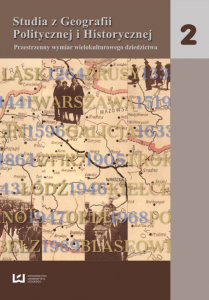Problematyka małżeństw mieszanych katolicko-ewangelickich oraz konwersje na Mazurach w latach 1850–1960
DOI:
https://doi.org/10.18778/2300-0562.02.09Słowa kluczowe:
chrzest, dane statystyczne, emigracja, ewangelicy, katolicy, konwersja, Kościół ewangelicki, Kościół katolicki, księża, małżeństwa, mieszane, Mazury, kult, ślubAbstrakt
Niniejszy artykuł jest próbą przedstawienia problematyki współistnienia dwóch społeczności wyznaniowych na terenie Mazur na przełomie XIX i XX w. Szczególnej analizie poddane zostaną małżeństwa mieszane, zawierane przez przedstawicieli obydwu społeczności oraz związane z tym zjawisko zmiany wyznania (konwersji). Celem autora jest uchwycenie zmian we wzajemnych ewangelicko-katolickich relacjach w kontekście zmieniającej się sytuacji politycznej i demograficznej. W dalszej części podjęta zostanie próba analizy socjologicznej zachodzących zjawisk i ich wpływu na rozpad społeczności ewangelickich Mazurów.
Bibliografia
Belzyt L., 1996, Zur Frage des nationalen Bewußtseins der Masuren im 19 und 20 Jahrhundert (auf der Basis statistischer Angaben), „Zeitschrift für Ostmitteleuropa-Forschung”, 45 (1), s. 35–71.
Google Scholar
Brenda W., b.r.w., Katolicy i katolicyzm na ziemi Piskiej w latach 1525–1945, „Pisz Kulturalnie.pl”: http://piszkulturalnie.pl/z-historii-regionu/pisz/katolicy-i-katolicyzm-na-ziemi-piskiej-w-latach-1525-1945 (08.10.2012 r.).
Google Scholar
Demby R., b.r.w., Olecko. Czasy, ludzie, zdarzenia. Reformacja: www.olecko.info: http://www.olecko.info/index.php?option=com_content&view=article&id=63:reformacja&catid=33:olecko-czasy-ludzie-zdarzenia-&Itemid=174 (09.10.2012 r.)
Google Scholar
Hase C.A., 1879, Herzog Albrecht von Preussen und sein Hofprediger, Wydawnictwo Breitkopf und Hertel, Leipzig.
Google Scholar
Jagucki A., 2001, Burzliwe lata na Mazurach, „Gazeta Ewangelicka”, 5.
Google Scholar
Jasiński G., 2003, Kościół ewangelicki na Mazurach w XIX wieku (1817–1914), Edycja wspólna Towarzystwa Naukowego i Ośrodka Badań Naukowych im. Wojciecha Kętrzyńskiego, Olsztyn.
Google Scholar
Kalendarze Ewangelickie z lat: 1956, 1958, 1962 i 1966.
Google Scholar
Kossert A., 1987, Między dwiema tradycjami. Trudna historia Kościoła ewangelickiego na Mazurach po roku 1945, „Borussia”, 17.
Google Scholar
Koyorć L., 1957, Mazury odbrązowione. Kraina dysydentów polskich, [w:] Kalendarz ewangelicki, Warszawa.
Google Scholar
Kruk E. (red.), 2001, Ewangelicy na Warmii i Mazurach. Dzieje i współczesność, Wydawnictwo Mazurskiego Towarzystwa Ewangelickiego, Olsztyn.
Google Scholar
Neumeyer H., 1977, Kirchengeschichte von Danzig und Westpreußen in evangelischer Sicht, verlag Gerhard Rautenberg, Leer.
Google Scholar
Oldenberg F.S., 2000, Przyczynki do poznania Mazur, Wydawnictwo Naukowe Semper, Warszawa.
Google Scholar
Sakson A., 1990, Mazurzy – społeczność pogranicza, Instytut Zachodni, Poznań.
Google Scholar
Pobrania
Opublikowane
Jak cytować
Numer
Dział
Licencja

Utwór dostępny jest na licencji Creative Commons Uznanie autorstwa – Użycie niekomercyjne – Bez utworów zależnych 4.0 Międzynarodowe.








